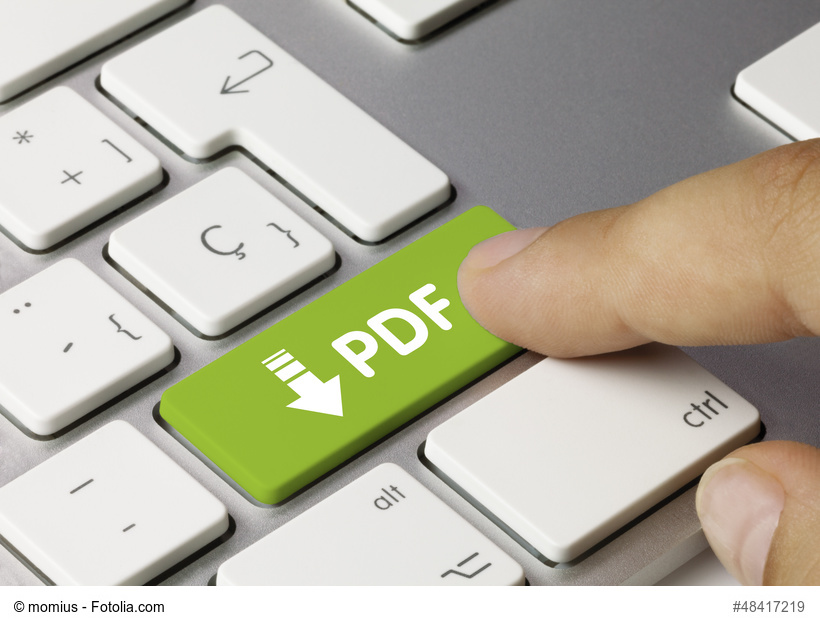Revision of PDF 2.0 – All about PDF/A-4
For 25 years now, the platform-independent file format PDF (Portable Document Format) has been used and regularly adapted and revised.
It is precisely the challenges of recent times that have meant that many companies have had to deal intensively with digital work processes. The PDF file format is used in many ways. For example, when sending and archiving digital documents in various companies, in the home office, in home schooling, in communication with offices, authorities, but also in electronic invoicing.
Publication of the revision of PDF 2.0
Over the years, the format has been further developed in different versions. Most recently, PDF 2.0 was a new ISO standard with new features and detail improvements available in 2017. The PDF standards are regularly revised and adapted, also to take account of technical innovations and to have a solid basis for the further development of future PDF applications. At the end of 2020, a second edition of PDF 2.0 with corrections was released. This second edition lays the foundation of the new standard parts PDF/A-4, PDF/X-6, PDF/VT-3 and PDF/R-1. More details here: All about the new PDF standards.
Since December 2020, the current PDF 2.0 PDF specification is available in the 2nd edition. The newly published edition of PDF 2.0 (ISO 32000-2:2020) replaces the 2017 edition (ISO 32000-2:2017). PDF 2.0 had already covered key issues such as e-invoicing for public authorities or the EU E-Invoicing Directive.
With this brand new version of 2020, PDF/A-4 (possibly also available under the name PDF/A-NEXT) is now released (ISO 19005-4:2020).
Changes related to PDF/A-4 – Benefits for long-term archiving with PDF
• The handling of electronic signatures according to the PAdES specification has been revised.
• Developers of PDF/A-compliant solutions may find it interesting to have simplified the handling of metadata and embedded fonts.
• The new specification provides an archiving path for PDF-2.0 files without losing the PDF-2.0 functions (e.B. page-based output intents) and form fields with JavaScript are supported.
• Instead of the previous compliance levels a/b/u, there are now additional new levels of compliance: PDF/A-4f and PDF/A-4e, thus simplifying the levels of compliance
Changes in levels of compliance:
As a successor to PDF/A-3, the compliance level PDF/A-4f has now been added. Here, the embedding of arbitrary files is allowed, which is especially important for users of electronic invoices as well as the ZUGFeRD data model. In addition, PDF/A-4e was developed, which concerns the Engineer area and additionally allows construction drawings to be viewed and archived interactively.
Further information:
- The PDF Association explains how the 2nd edition of PDF 2.0 affects the individual standard parts: https://www.pdfa.org/the-new-pdf-2-0-and-subset-standards/
- In our webPDF blog you will also find more information about the individual PDF subformats, on the topic of long-term archiving of e-mails in companies or electronic invoicing with ZUGFeRD or XRechnung.

